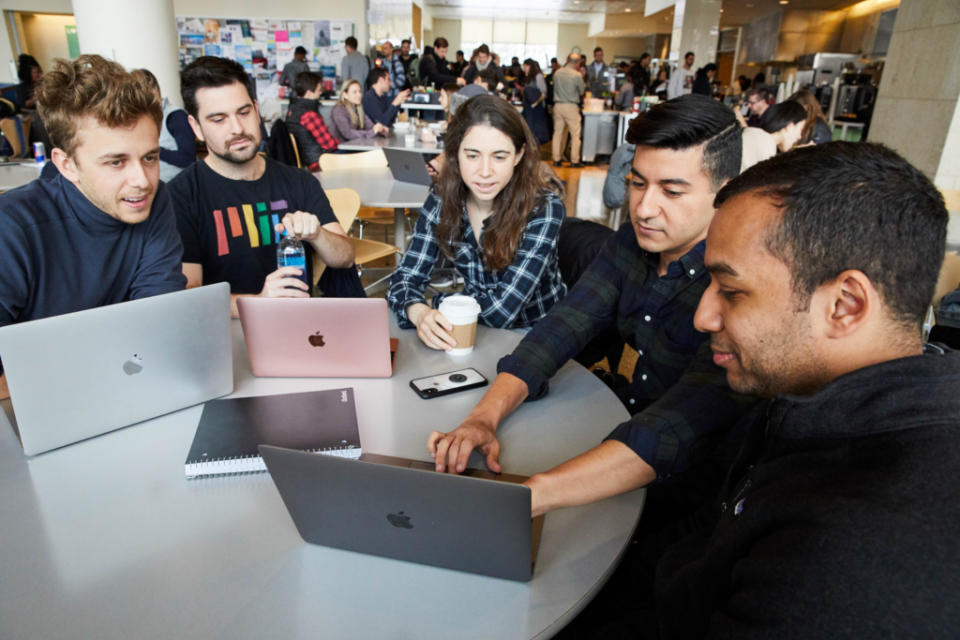Tips For The Harvard Business School Interview

A Harvard business School classroom with masks and social distancing during COVID
Tips For The Harvard Business School Interview
Harvard Business School round two interview invites were sent out this week.
The interview is an opportunity for the admissions committee to see who you are off paper.
Andrea, consultant at Stacy Blackman Consulting (SBC) and former HBS Admissions Officer, recently offered a few tips on how to prepare for the HBS interview.
DEMONSTRATE DEPTH OF INSIGHT
The HBS interview plays huge significance in whether an applicant will be accepted or not.
According to Andrea, the number one tip is to demonstrate a deep sense of intellectual curiosity with a point of view. The point of the interview is to gauge an applicant’s personal qualities and characteristics.
“You cannot let even the smallest question seem surface level,” Andrea says. “Demonstrating depth of insight and the ability to cross-correlate are so important.”
One way to show depth, according to Stacy Blackman, is to share framing and context before you explain details.
“Motivations, learnings, anomalies, growth, hesitations, and realizations are all ways to show depth of character and genuinely connect with the interviewer beyond the facts they have already read,” Blackman writes.
KNOW YOUR RESUME
When preparing for your interview, it can be helpful to study your resume as it will be referenced throughout.
“Prepare to answer questions ranging from major industry headlines to hobbies and interests,” Blackman writes. “For example, if you’ve said you’re a historical fiction buff, be ready to talk about it.”
As your interview comes to an end, your interviewer will ask if there’s anything else you think the admissions committee should know about you. How you answer this question is critical.
“At the end of the interview, if you are asked what else should we know about you, know that it is not a throwaway question,” Andrea says. “You should have managed the interview to that point so that you know what you wanted to share that you haven’t and take the opportunity to work it in.”
POST-INTERVIEW
You’ll be given an opportunity to submit a post-interview reflection within 24 hours after your interview. This written reflection should be brief and concise.
“We suggest you keep it to one page or less in length,” Blackman writes. “In it, you should thank the interviewer(s) and recap what you enjoyed about your conversation. Don’t forget to answer the question they asked directly.”
Sources: Stacy Blackman Consulting, Harvard Business School
Next Page: MIT Sloan Pre-Interview Questions

MIT Sloan Students
How To Approach MIT Sloan’s Pre-Interview Questions
MIT Sloan requires applicants to submit a response to one of two pre-interview questions as a means to learn more about “how you make data-driven decisions and communicate results.”
Trisha Nussbaum, an MBA Admissions coach with Fortuna Admissions, recently broke down Sloan’s pre-interview prompts and offered tips for applicants on how to approach each option.
OPTION A
The first prompt option asks applicants the following:
Please select an existing data visualization and in 250 words or less, describe what it means and why it matters to you. The data visualization must be uploaded as a PDF. Examples may come from current events, a business analysis, or personal research (e.g. climate change, COVID-19 maps, etc.)
This option, according to Nussbaum, is more of a values and goals question. To find visualization, Nussbaum recommends CBInsights, which offers business analysis visuals.
Additionally, Nussbaum says, it can be helpful to reference Edward Tufte’s Fundamental Principles of Analytical Design, which provide evidence to communicate efficiently and effectively.
OPTION B
The second prompt option asks applicants the following:
In 250 words or less, please describe a recent data-driven decision you had to make, and include one slide presenting your analysis. The slide may include a data visualization example and should present data used in a professional context. You slide must be uploaded as a PDF.
Nussbaum says this prompt is less about the specific data you’ve used, but rather, whether the data resonates with your audience. This prompt is more of a leadership or situational question.
“There are many things that can potentially qualify as ‘data,’” Nussbaum writes. “Most business leaders need a lot of perspectives and opinions and utilize many resources to make calculated decisions. You could say that those perspectives equate to ‘qualitative data.’”
Nussbaum recommends offering an analytical approach to the data you provide.
“In structuring your response, consider an adapted version of the STAR (Situation Task Action Result) format, where the task is the decision you have to make, and the action is more about your consideration of the factors and hypotheses that go into making that decision,” she writes.
Sources: Fortuna Admissions, MIT Sloan, CBInsights, Edward Tufte
Next Page: Online MBA programs for international students

International Students: Here’s What To Consider When Looking At Online MBA’s
In 2019, Online MBAs became the largest population among all other professional MBA program types according to a GMAC survey.
Without a doubt, the COVID-19 pandemic has also added to the popularity behind the online degree. For many international students who have faced U.S. visa barriers, the online MBA may be an appealing option. Anayat Durrani, a contributor at US News, recently offered a few tips that prospective international students should consider when searching for the right online MBA program.
FIND YOUR FIT VIA CURRICULUM
Fit is incredibly important when it comes to the MBA. When considering online MBA programs, Durrani recommends looking at a B-school’s curriculum.
“Finding the right fit means considering an online MBA program and curriculum that matches an international student’s career goals and is applicable to the region in which he or she plans to work,” Durrani writes.
LOOK FOR DIVERSITY
One of the biggest benefits to the MBA degree is the network that you build while at business school. Experts recommend looking for online MBA programs that attract a diverse student body.
“Collaborating with people from a broad range of different backgrounds gives me the opportunity to learn from them firsthand,” Chinese national Yufan Shen, who is in the USC Marshall online MBA program, tells US News. “It also helps me to expand my knowledge about the business world, and especially those parts of it that are not part of my own personal experience.”
CONSIDER COURSE FORMAT
Since online MBA’s don’t require an on-campus presence, the course delivery is even more important when looking at different programs.
“Depending on the university, classes may be offered in a synchronous format, where students view live lectures online and interact with fellow students, as well as an asynchronous format, in which students complete coursework on their own time,” Durrani writes.
The post Tips For The Harvard Business School Interview appeared first on Poets&Quants.

 Yahoo Finance
Yahoo Finance 